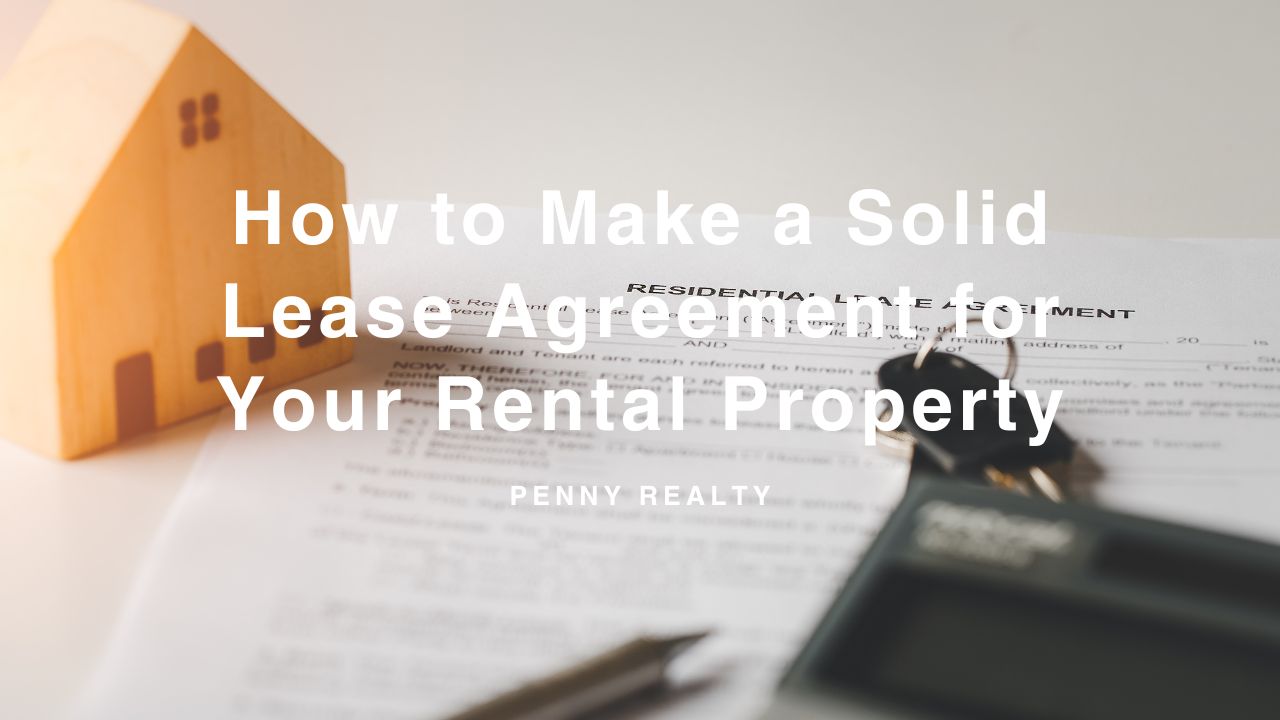While verbal contracts are legally valid, they can be hard to enforce in disputes. Written lease agreements are preferred as they establish clear, binding terms, ensuring both the landlord and tenant understand their rights and responsibilities.
A signed lease agreement serves as an official contract, outlining rental terms and ensuring mutual consent. It helps manage issues like late payments, evictions, or maintenance requests. It also provides a written record of both parties' rights and obligations.
A well-written lease contract offers clarity, security, and peace of mind for landlords and renters alike. Learn everything you need to know from the experts at Penny Realty Inc. Property Management!
Creating a Solid Lease Agreement
When drafting a lease agreement it's essential that it meets all legal requirements and clearly outlines both parties' rights and responsibilities.
For new landlords understanding local and state laws can be challenging and time-consuming. Different regions have varying regulations on tenant rights, eviction procedures, and security deposits, Failing to comply can result in legal issues.
A professional property management company can help new landlords by creating legally sound lease agreements. With their expertise, they ensure rent terms, maintenance responsibilities, and other key details are properly addressed.
The Purpose of the Lease Agreement
A lease agreement acts as a clear guideline for both landlords and tenants, answering common questions about policies and responsibilities. It saves time by reducing the need for repeated clarifications while also protecting the landlord in case of disputes.
A written lease makes it easier to enforce rules and defend the landlord’s position if the tenant violates any conditions. In case of conflicts like late rent or property damage, a solid lease agreement should outline clear protocols for resolution.
It sets expectations for both parties, ensuring smoother handling of issues, unlike verbal agreements, which are often confusing and hard to enforce.
Essential Elements of a Lease Agreement
While every lease agreement may vary in terms and conditions based on the property or location, there are basic elements that every lease should include:
Landlord and Tenant(s) Names: It’s important to list the full legal names of all parties involved in the lease agreement to avoid confusion and establish their identities.
Rental Property Address: The address of the rental property, including unit numbers if applicable, should be clearly stated to specify which property the lease applies to.
Rent Due Date: The date rent is due should be clearly outlined. It removes any ambiguity and ensures that tenants know exactly when payments are expected.
Rent Amount: The rent amount, both in numeric and written form, should be clearly defined. As well as any additional fees, such as pet rent or parking charges, must be listed separately to avoid misunderstandings.
Lease Term: The lease term (e.g., 12 months, 6 months) should be specified along with the start and end dates. Vagueness here can lead to confusion and problems when it comes to lease renewals or breaking the lease early.
Signatures of All Parties: Both the landlord and the tenant(s) must sign the lease for it to be legally binding. The signatures should be dated to confirm when the contract was agreed upon.
Important Clauses to Include in The Agreement
In addition to the basic information, several essential clauses and policies should be incorporated into the lease agreement to ensure both landlord and tenant understand their obligations:
Permission to Sublet: A clause addressing subletting the property should clearly state whether tenants are allowed to sublet the property or part of it. If subletting is permitted, tenants should be required to get written approval from the landlord. This gives the landlord control over who is occupying the property.
Access to the Property: While tenants are entitled to quiet enjoyment of the property, landlords also have the right to access the rental unit under certain conditions. The lease should specify the notice period the landlord must give before entering the property, depending on local laws.
Tenant Responsibilities: While landlords are typically responsible for keeping the property habitable, tenants must also meet certain obligations, such as maintaining cleanliness, disposing of trash properly, and adhering to noise or nuisance policies.
Breaking the Lease: The lease should outline the procedures and penalties for breaking the lease early. Specific legal protections may allow tenants to break the lease under certain circumstances, such as active military duty or being a victim of domestic violence.
Security Deposit: The lease should clearly state the amount of the security deposit and outline how it will be handled. The process for returning the deposit at the end of the lease should also be included to prevent future disputes.
Bottom Line
For new landlords, navigating lease agreements can be overwhelming. By outsourcing lease creation to a property management company, landlords avoid the hassle of legal research and can focus on other aspects of property management, like tenant screening and maintenance.
With a legally sound lease in place, landlords gain peace of mind, knowing their interests and tenants' rights are protected.
If you need help drafting a solid lease agreement for your rental property, let our expert team handle it for you. We'll ensure it's legally sound, clear, and comprehensive. Contact us today to learn more about our hassle-free property management services!



